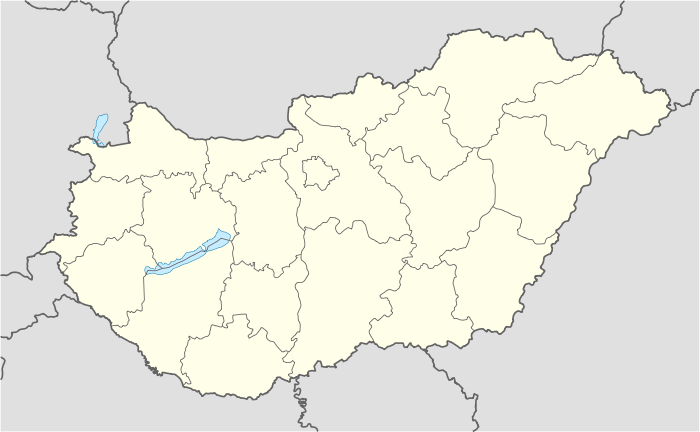Dömös
| Dömös | |
|---|---|
 Dömös Location of Dömös | |
| Coordinates: 47°45′53″N 18°54′52″E / 47.76480°N 18.91437°ECoordinates: 47°45′53″N 18°54′52″E / 47.76480°N 18.91437°E | |
| Country |
|
| County | Komárom-Esztergom |
| Area | |
| • Total | 23.97 km2 (9.25 sq mi) |
| Population (2004) | |
| • Total | 1,137 |
| • Density | 47.43/km2 (122.8/sq mi) |
| Time zone | CET (UTC+1) |
| • Summer (DST) | CEST (UTC+2) |
| Postal code | 2027 |
| Area code(s) | 33 |
Dömös is a village in Komárom-Esztergom County in Hungary.

Setting, geography
Dömös is located on the right side of the Danube, 16 km from Esztergom and 45 km from Budapest. The also beautiful town, Visegrád is located 5 km east from Dömös. The highway No. 11 cross the village. It has a railway station on the other side of the Danube, on the Budapest – Szob railway line. A shuttle transport on the river.
History
The site has been populated even in ancient times. Archaeology revealed men and settlements, instruments and animal bones from hunting and fireplaces (neolithic age). Tomb of the copper age man was also found (2500-1900 BC). In the late Bronze Age a 500×500 métre fortress from gounddams (1000 BC) There are guarding towers from the Roman age. They were built along the Danube line in the Pannonia region border of the Roman Empire. (Tófenék). After the Huns, the Avars came here in 568 and ruled until the 9th century. Bronze belt buckles, horse and warrior mounts, ceramics of the Avarian age were excavated from warrior’s tombs. (Malom-creek valley).
Árpád dynasty age
There is a groundwork fortress on the top of the Árpád hill from the Hungarian conquest time. The Danube turn gives a good fortification locality and the region was royal domain during the Árpád house kings of Hungary. The region was named Pilis forest. The royal palace and the neighbouring monastery played and important role in the life in the 11th century. Specifically, the life of Béla I of Hungary ended here in 1063. The earliest charter was given out by Ladislaus I of Hungary in 1079. In the 12th century Coloman of Hungary decided about the contunuation of the throne for Stephen II of Hungary against the later king Béla II of Hungary. In the Mongolian invasion (1241) the monastery was destroyed, but rebuilt soon. The provost of the monastery also served the king and the royal family. Provost Fülöp was the chancellor of the queen during the times of Béla II of Hungary.
Sigismund, Holy Roman Emperor, who was Zsigmond, king of Hungary, gave the monastery to the dominicant order. (1433-1446). János Hunyadi governor also gave the monastery back to his preferred priest, to Hosszuaszai Bothos István. Pope Alexander VI decided to move the monastery to the diocese of Nyitra. Since that time the Bishop of Nyitra became the provost of Dömös. In 1526 the Turks destroyed the monastery. The ruins stood in the 18th century. The stones from the ruin were used to build the new catholic church of the village.
Sightseeings
The ruins of the Dömös monastery, and the subchurch can be visited. Beautiful heads of columns were preserved and the original carvings can be found in the National Museum in Budapest.
References
- Gerő, L. (1984): Magyar műemléki ABC. (Hungarian Architectural Heritage ABC.) Budapest
- Henszlmann, I. (1876): Magyarország ó-keresztyén, román és átmeneti stylü mű-emlékeinek rövid ismertetése, (Old-Christian, Romanesque and Transitional Style Architecture in Hungary). Királyi Magyar Egyetemi Nyomda, Budapest
- Bérczi Szaniszló, Bérczi Zsófia, Bérczi Katalin: Románkori templomkapuk: régi és új műveltség egymásrarétegződése a románkori templomok épületszobrászatában, kapukon és oszlopokon. (Romanesque doorways: stratification of old and new culture in the architecture and sculptures of the Romanesque Architectural Style.) TKTE, Piremon, 1997.
External links
| Wikimedia Commons has media related to Dömös. |
- Street map (Hungarian)
- Dömös village homepage
- Dömös on the Vendégváró homepage
- Aerial photographs from the monastery